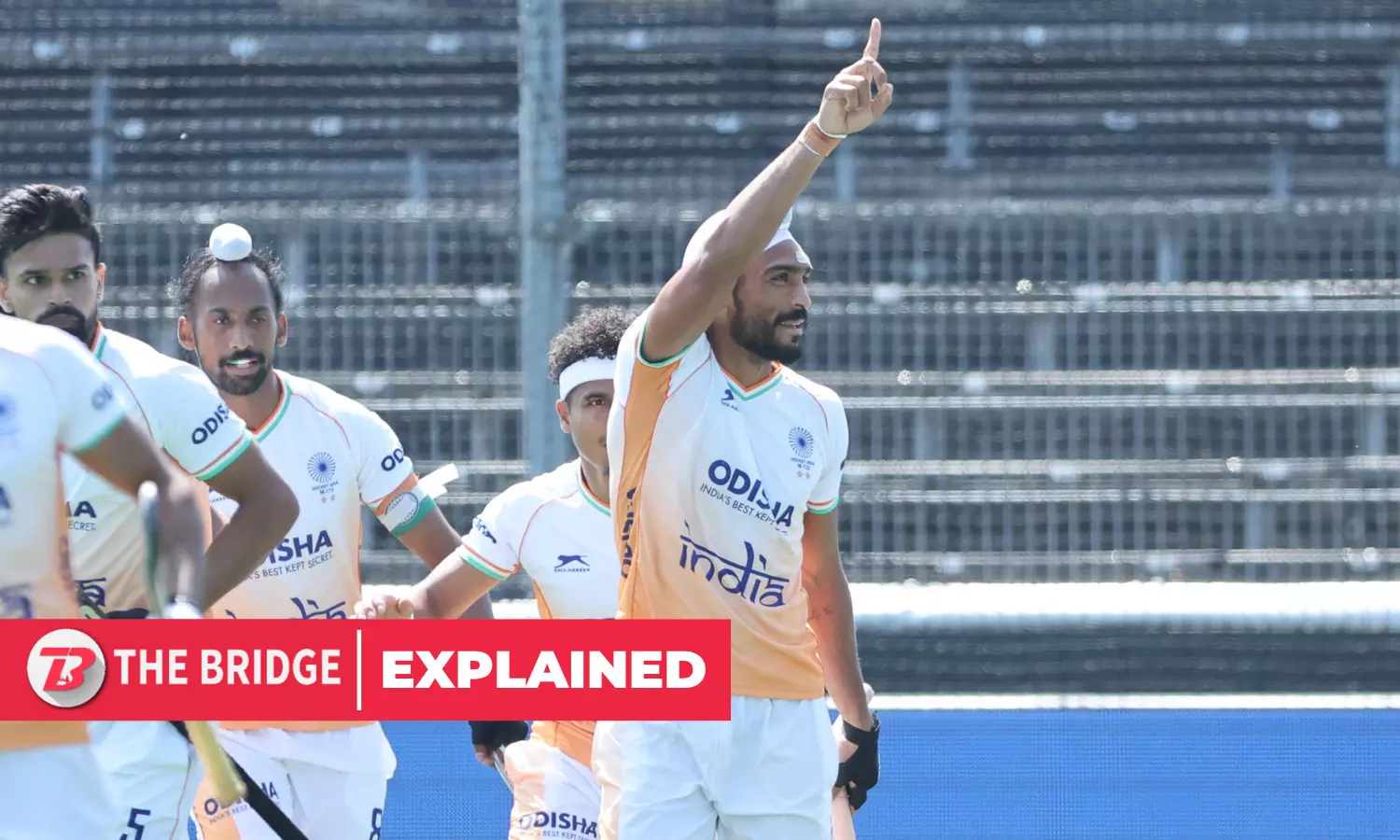Hockey
Explained: Why India’s penalty stroke goal against Argentina was disallowed
The goal would have handed India their first points of the European leg of the FIH Pro League 2024-25.

Jugraj Singh opened the scoring for India via a penalty corner. (Photo credit: FIH)
India hasn’t had the best of outings at Amstelveen on the European leg of the FIH Pro League 2024-25.
And on Thursday night, their campaign took a turn for the worse, after they went down 1-2 to Argentina in what was their fourth straight loss of the campaign.
As if to add insult to injury, India squandered a penalty stroke at the death, in what was a bizarre spell of play.
Goal denied
The drama unfolded with just one minute left on the clock in the final quarter.
Jarmanpreet Singh, like he always does, sent a sharp pass towards the Argentinian box from the right flank. Abhishek received it and wove his way past the defense, which fouled him in the process.
Penalty stroke!
With Harmanpreet Singh, the designated stroke-taker for India, sitting the game out owing to a splitfinger, Jugraj Singh stepped up and duly scored.
Scores level!
Almost immediately, Argentina’s players rushed the referee in protest.
The referee then turned to the video umpire for a review. After reviewing the penalty, the video umpire found fault in Jugraj’s technique when taking the penalty and disallowed the goal.
Now, the Indians were up in arms.
It was their turn to seek a review while complaining that the Argentinian keeper Tomas Santiago was off his line before Jugraj took the stroke.
The video umpire, reviewed the moment after acknowledging that during the first review, only Jugraj’s movement was reviewed and now, the focus was to check Santiago’s footwork.
Replays showed that the keeper had indeed moved off his line before Jugraj had taken the penalty, a violation and therefore, ruled out the goal and instead, ordered a retake of the penalty.
Jugraj stepped up to the plate a second time and scooped the ball to the top-right of Santiago, who stuck his right hand out to make the pivotal save to deny India the eqaliser.
What the rules state
Per clause 13.7.d pertaining to ‘Taking a penalty stroke’ the FIH rules state that, “the player taking the stroke must stand behind and within playing distance of the ball before beginning the stroke.”
Similarly, per clause 13.7. i, “the player taking the stroke must push, flick or scoop the ball and is permitted to raise it to any height. Using a ‘dragging’ action to play the ball at a penalty stroke is not permitted.”
When Jugraj Singh took the first stroke, he employed a drag-flick motion with his left foot visibly place well above the ball. Both these actions were in violation of clause 13.7.d and 13.7.i.
As for the goalkeeper, per clause 13.7.e, “the player defending the stroke must stand with both feet on the goal-line and, once the whistle has been blown to start the penalty stroke, must not leave the goal-line or move either foot until the ball has been played.”
Likewise, per clause 13.9.d, for an offence during the taking of a penalty stroke: “for any offence by the player defending the stroke including moving either foot before the ball has been played: the penalty stroke is taken again.”
And it was these two clauses that the video referee employed when ruling that Santiago has moved before Jugraj took the first stroke.
Therefore, despite Jugraj having scored, by virtue of Santiago’s initial movement being a violation and Jugraj’s himself having stepped ahead of the ball and employing a drag-flick motion, the goal off the first stroke was deemed invalid.
At the heat of the moment, when the chance presented itself before them, India fluffed its lines.
The consequence – a fourth straight loss and plenty to think about.

